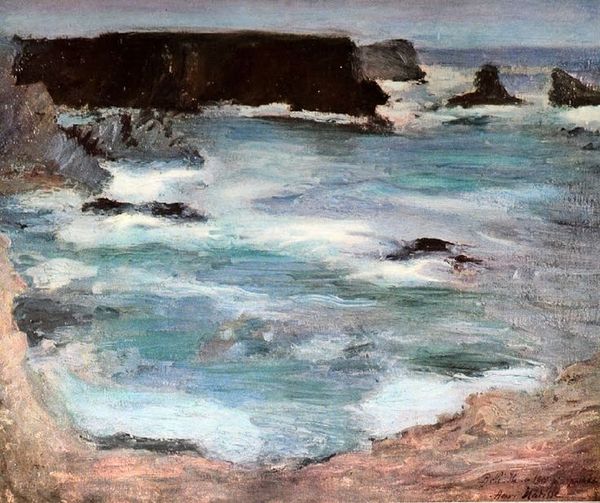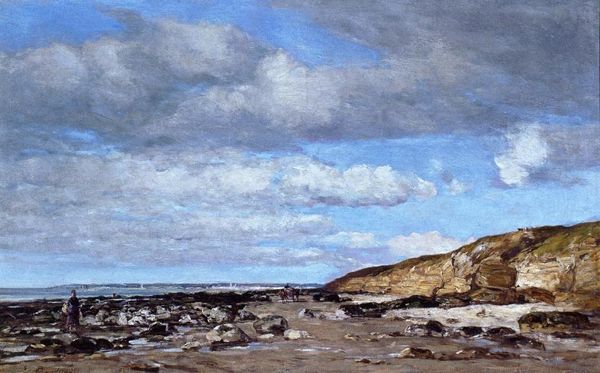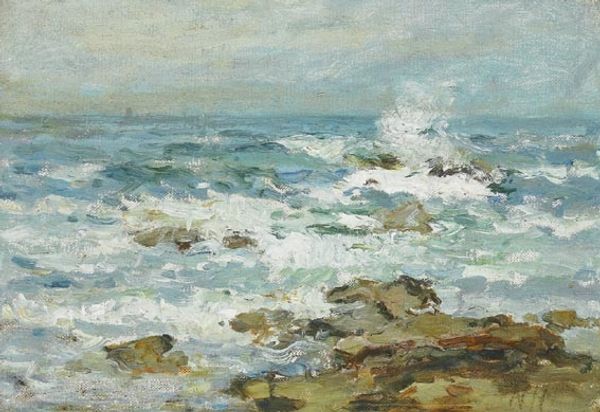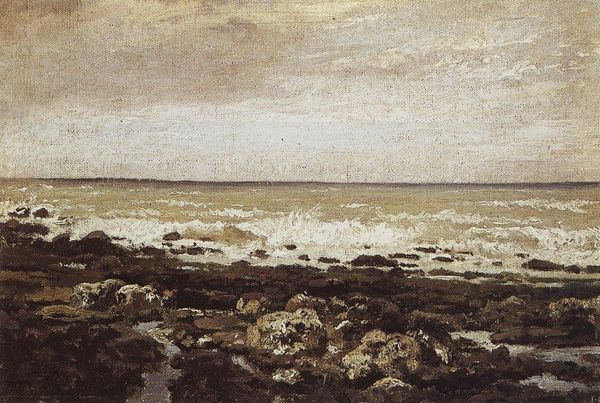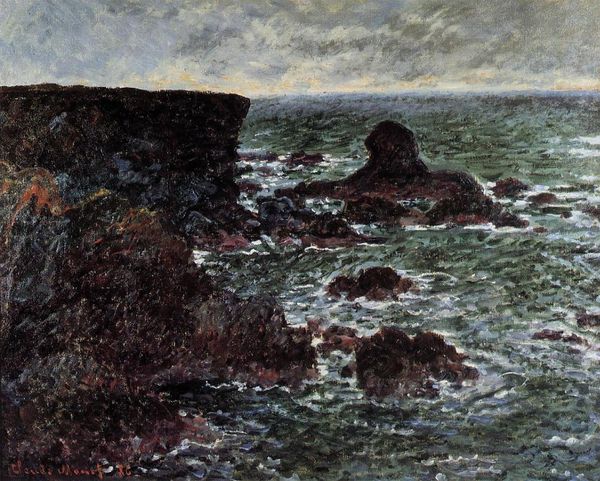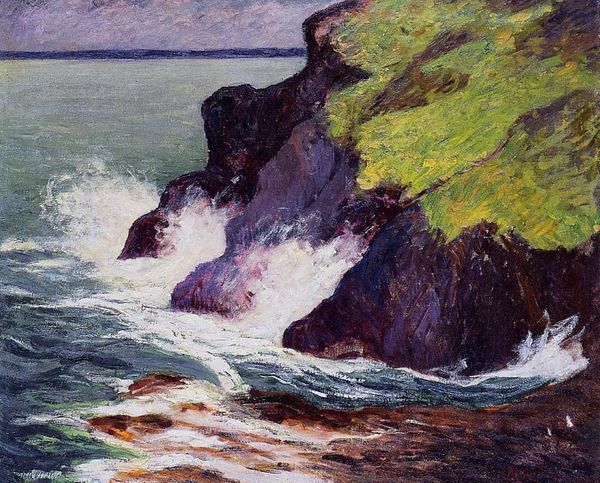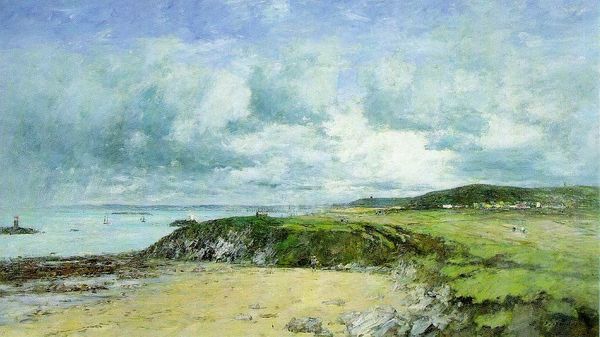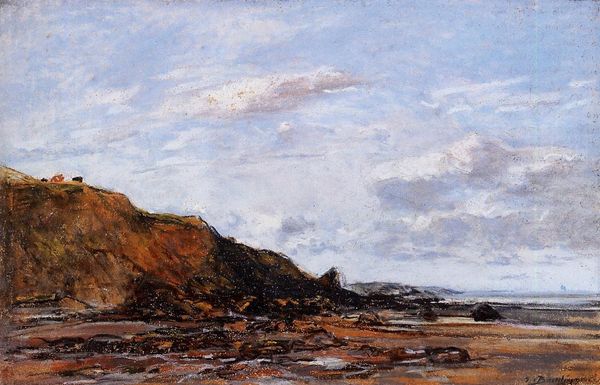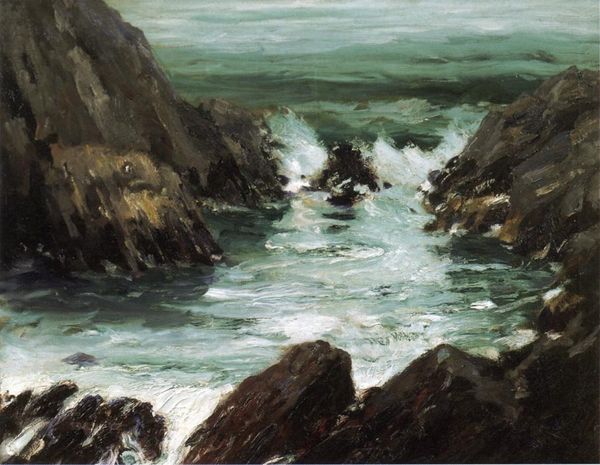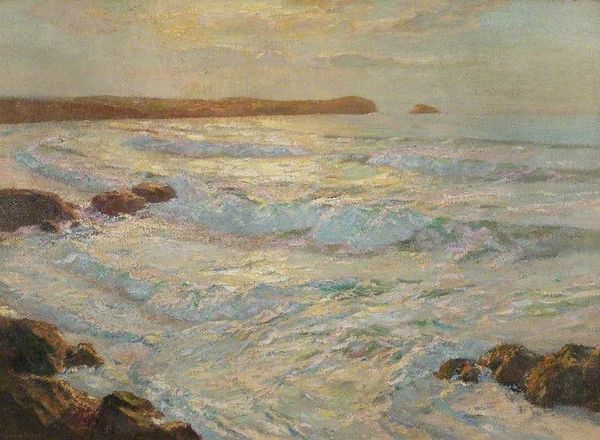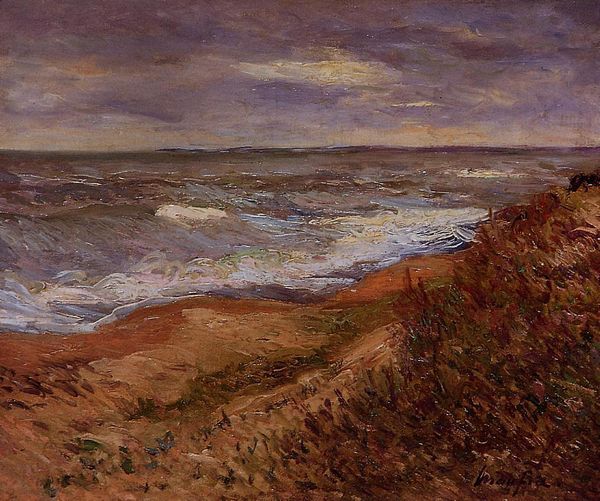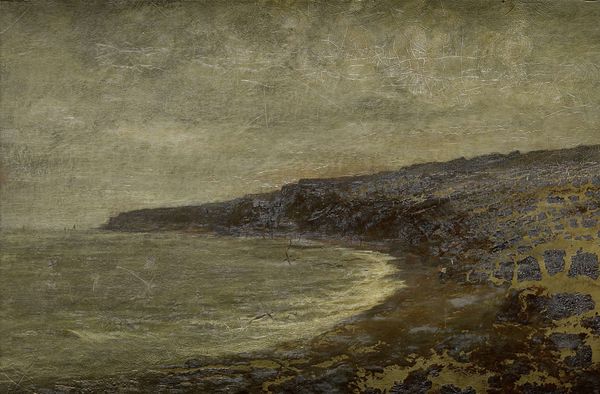
Dimensions: 55 x 66.5 cm
Copyright: Public domain
Curator: Alfred Sisley's "High Wind," painted in 1897 using oil on canvas. What are your initial thoughts? Editor: Bleak, raw. The paint handling reflects the very wind of the title, whipped and almost brutal. I feel a certain defiance emanating from the land against the sea. Curator: Interesting you say defiance. Consider Sisley's position as an Impressionist deeply rooted in the *plein air* tradition. The means of production here - the direct engagement with nature, painting outdoors - speaks volumes. It's an attempt to grapple directly with the material forces acting upon the landscape, isn’t it? He is battling with the wind himself, no easy undertaking. Editor: Yes, and I'd argue the landscape itself carries a symbolic weight. The rocky shoreline has been a classic symbol of resilience for centuries. What do the water, the unyielding land, the stormy sky say to you? I feel this invites one to ponder mortality. Curator: From a material perspective, notice the heavy impasto, particularly on the cliffside. This isn’t about delicate illusionism; it’s a constructed reality, layering oil paint as one might pile stones. The very physical properties of the medium become intrinsic to the narrative, I would propose. Sisley seems to revel in the tangible substance of his paints and implements. How were these raw materials mined and manufactured to achieve this textural outcome? Editor: The subdued palette certainly adds to that atmosphere, doesn't it? Those muted greens and browns… It reinforces this somber symbolism, almost a premonition. What story did this landscape tell the locals at that time? What social meanings did a stormy sky contain within that culture? Curator: He seems far less concerned with fleeting moments of light like other Impressionists and more absorbed by its geological form and tangible atmospheric conditions. The production of painting is an intimate conversation between artist, subject, and nature’s volatility. The artist attempts mastery in his act, which I would find optimistic. Editor: Precisely! And optimism may also arrive through interpreting this kind of art over centuries. I sense a melancholic power. Those stark colors—those craggy forms – invite us to project, to find continuity with struggles across different epochs of conflict between ourselves and the universe. Curator: Looking at "High Wind," my gaze always returns to Sisley's commitment to materiality. It highlights our ongoing exploration of how our interaction with art challenges preconceived notions and fosters profound exchanges, to reveal nature and the artist’s perspective upon it. Editor: And for me, reflecting on how symbolic landscapes speak volumes. This reveals emotional common ground. A potent image leaves something unresolved to draw us closer into the landscape with which Sisley conversed.
Comments
No comments
Be the first to comment and join the conversation on the ultimate creative platform.
